Where to start when choosing a mattress?
Okay, before we start diving into all the details surrounding your new mattress, there are a few things we should establish first. So, we suggest getting out a pen and paper or creating a word doc and jotting down the answers to the following questions so that you can narrow things down before you ever start browsing all the different mattresses available on the market.
Do you need a new mattress?

The most fundamental question you should ask yourself is whether you need a new mattress in the first place. So, carefully examine your current sleeping experience.
If, for example, you wake up with aches in your neck and back, your mattress is probably either too old or too firm. These issues can't easily be solved without getting a brand-new mattress and starting from scratch. The same goes if you only experience insomnia or overheating when in your own bed while even the couch provides a better experience.
On the other hand, if you're difficulties are just slight discomfort or a mild allergic reaction, there's a good chance that a mattress topper will suffice. So, try to realistically gauge how drastic your current situation is and especially take note of how old the mattress is (as anything over 7 years is bound to fall from grace).
What size do you need?
The second big question is what size are you looking for? It might be enticing to look for a queen-sized mattress and imagine yourself rolling around on it but if you don't have the space for it, it shouldn't be considered.
And on the other hand, even the best single mattress isn't worth it if you're supposed to share the bed with your partner or even a large dog. So, we suggest looking at this UK mattress sizes chart, measuring out your room and sticking to what you need. Additionally, you can consider an adjustable mattress for added comfort and customization.
Also, keep in mind that a new bed frame can cost a pretty penny as well. So, if you do decide that you'd like to get a bigger mattress, immediately calculate how much of an extra cost the bed frame will pose.
Examine your current sleeping habits
Now that you've established that you do in fact need a new mattress and you know the size of the mattress you'd like, it's time to get into the tougher questions. So, for starters, we'd like you to examine your current sleeping habits in two major categories.
How do you sleep?
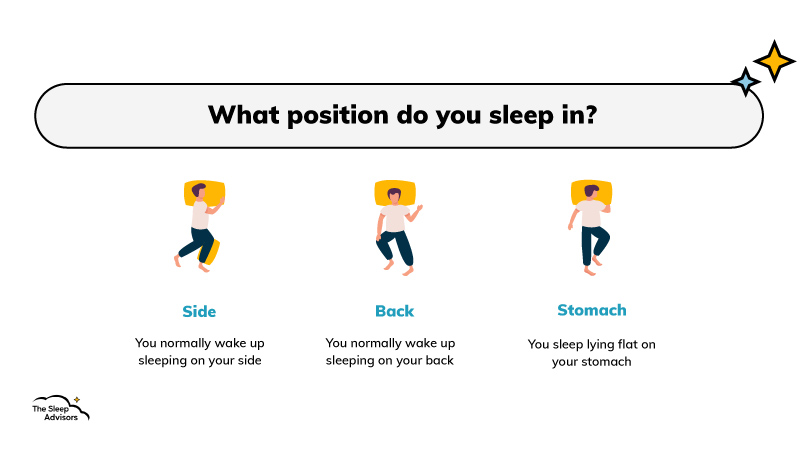
Your sleeping position might seem rather inconsequential but it actually dictates your perfect mattress quite a bit. For example, if you only sleep on your stomach, a firm mattress is going to feel a lot nicer than if your stomach sinks into the mattress and you end up sleeping in a U shape.
On the other hand, if you sleep on your side, a soft mattress can allow your hips to dip and for your spine to stay straight. And if you're a combination sleeper (which means you change sleeping positions during the night), you need a mattress that's going to feel relatively comfortable regardless of how you toss and turn.
So, take note of your sleeping position and jot it down somewhere, as we will return to these types later on in the article and discuss them in more detail. And make sure that you take your sleeping position into account – as getting a firmer mattress (for example) while mostly sleeping on your side can lead to a serious lack of sleep.
Firmness

On a similar note to the previous segment, let's talk about firmness. On the one hand, it also heavily relies on your sleeping position – with stomach and back sleepers generally preferring firmer mattresses, side sleepers liking softer models and combination sleepers wanting to be somewhere in the middle.
However, when it comes to the ideal firmness for you and your mattress, you also have to take body weight into account. This is because, generally, the heavier you are, the firmer the mattress needs to be in order for your spine to stay healthy.
For most people, medium-firm mattresses will get the job done but if you're lighter or heavier than the average adult, you might want to look into the firmness scale we've provided and see what works for you. And do note that it isn't an exact science – as it depends on your overall proportions and you can always tweak the firmness with mattress toppers or by making the mattress less firm.
Price

The next big question you need to answer is “how much damage can your wallet take?”. Jokes aside, a high-quality mattress can be rather expensive, so it's important to know right away what your limits are.
Therefore, set up a general budget that takes into account potential shipping costs as well as any added products you might need (like a new bed frame, bed sheets, duvets etc). After you've done so, we generally suggest not even looking at the products that are significantly above your upper limit – as the last thing you'd want is FOMO clouding your judgement.
Don't get us wrong, the more expensive mattresses do tend to be of a higher quality – as the manufacturers can use higher quality materials, certain parts of the mattress can be customised, and/or they come with perks that you can't get anywhere else.
That being said, besides a good mattress, another factor that heavily affects sleep is your mental health. And even the best mattress can't guarantee a perfect night's sleep if you're depressed from spending too much money and going into debt.
Which material & mattress type will you choose?
So far, all of the factors you had to consider were in relation to your budget, your habits, and your needs. But now we're getting into mattress-specific territory and determining the qualities of a good mattress. After all, different mattress types can provide completely different experiences when it comes to sleep quality.
That being said, it's not an exact science. A pocket-sprung mattress can still be soft, a foam mattress can have good breathability, a mattress without springs can still be supportive and so on. We're just going to give you some general characteristics that tend to pop up, and then you can do further research to see which type suits you the best.
After all, if you've been getting lousy sleep until now, it might be time to consider a different type of mattress. And to make things go a little faster, we'll also include a mattresses buying guide for each category so you don't have to waste time searching through the internet.
Foam

First off, we have foam mattresses. Generally speaking, foam mattresses tend to be the softest mattress type as you can sink into the foam and have the sensation of sleeping on a cloud. Because of this, it's also typically the best mattress for lightweight people who sleep on their side.
And if you specifically look for memory foam mattresses, you'll also get a fair amount of pain relief and joint support as your hips and shoulder can slightly dip into the foam instead of pressing against it. So, foam mattresses are also an excellent choice for those who might have body aches somewhat frequently.
When it comes to the cons of foam mattresses, the most common one you'll hear is in regard to overheating. Foam is generally very dense and thus the heat coming off your body can't freely disperse into the mattress and keep you cool. However, this is a lesser issue with higher-grade foam mattresses as they tend to have some type of cooling mechanism.
Lastly, foam mattresses can come with slight off-gassing, but the smell rarely sticks around for more than a day or two. To see the memory foam mattresses we recommend, we suggest reading our article on the topic.
Spring

Pocket-sprung or innerspring mattresses are the oldest mattress type and feature a metal construction of some sort covered in a softer material on top. Generally speaking, they tend to be a lot firmer than foam mattresses (sometimes having the tag orthopaedic mattresses) and provide more support.
On top of that, they're also typically more breathable as air can easily travel between the springs and disperse underneath the bed. Some higher-end models even feature side vents that help this process further. So, they're an excellent choice for hot sleepers as well as heavier sleepers and people who need a lot of body support.
However, spring mattresses also tend to have worse motion isolation, as every movement transfers across the multiple springs. This is quite an issue if you share the bed with a partner. But just like with foam mattresses, higher-end models do away with this issue by creating individual pockets for the springs.
Lastly, budget-oriented spring mattresses might not be as comfortable as cheap foam mattresses, since low-quality padding might make it so that you feel the construction underneath. To see the spring mattresses we recommend, head on over to our guide.
Hybrid
A hybrid mattress basically takes both foam and springs and puts them together in the hopes of being the best type of mattress on the market. However, this isn't always the case as the quality can vary drastically depending on where you get the mattress from.
So, while some hybrid mattresses do achieve that Goldilocks zone of having the comfort of a foam mattress and the support of a memory foam mattress, you have to be careful. After all, you might end up in the opposite situation and have a mattress that has both overheating and motion transfer issues.
So, it's a bit difficult to gauge when one should opt for a hybrid. Keeping an eye out can never hurt but we suggest being extra careful and taking the brand into account. After all, the hybrid mattresses at John Lewis are a lot more likely to be of high quality than that of an unknown retailer on the internet.
And if you want to know our personal picks for the best hybrid mattresses, here's our list. They can get a tad pricey but we think they're worth the spend.
Latex
The easiest way to view and understand latex mattresses is to consider them upgraded foam mattresses. They allow for that same sinking feeling, generally offer top-tier comfort, and can keep you warm during the winter due to how dense the material is.
In fact, latex mattresses (especially when it's natural latex), surpass foam in certain areas. Most notably, it reacts much more quickly than foam, meaning that you can just jump into bed and it'll mould to your body in seconds.
However, be aware that a premium experience like this can also come with a premium price tag. So, if you're looking for budget-friendly options, a latex mattress probably isn't going to fit in. But if you'd like to know more about latex, and how it's different from foam, we have the perfect article for you!
Airbed
When it comes to airbeds, it's a mixed bag. For most people, an airbed is only ever used when they have guests over or when they're out camping. After all, no other mattress is as easy to transport while also being rather easy to set up as well (if you have a pump).
However, there's nothing stopping you from making an airbed your go-to mattress. Just make sure that the airbed is thick (35cm is the minimum) and that the lower part of the mattress features a durable material like vinyl.
Plus, air mattresses can be rather unique. For example, some bigger air mattresses come with two separate cores where you can individually tune how firm each side of the mattress is. And if you like sleeping on a firm mattress while your partner likes to keep things soft and cushy, this is an incredible perk to have.
But you should also keep in mind that airbeds require more maintenance than regular mattresses and probably won't last nearly as long. If you want to learn more, just head on to our air mattress complete guide.
Waterbed
Just like airbeds, waterbed mattresses aren't all that popular but they're definitely the perfect choice for some people. And this is because it comes with very specific benefits as well as very specific drawbacks.
When it comes to the advantages, the most important one is the added pain relief. In fact, waterbed mattresses were initially intended for hospitals simply due to how well they can support your back and joints. And another feature that's worth keeping in mind is that waterbeds last a long time (sometimes up to 15 years).
So, if your back is aching and you don't want to come back to this article for a decade or two, a waterbed could be ideal for you. However, they can also be quite a hassle to maintain and they're the only mattress that can cause serious damage to your bedroom if you're unlucky enough.
Plus, while the higher-end models feature complete temperature control, cheaper models will probably leave you feeling a bit cold. If you want to know more about waterbed mattresses and their features, we recommend giving our article a read.
Which features would you like?
Now that we covered mattress types as well as general guidelines, it's time to talk about specifics – the features mattresses can offer. Based on your lifestyle, your composition, and your needs, some features can be non-negotiable while others will just drive up the price for no reason. So, here are some of the features you should look out for.
Motion isolation
Motion isolation or the absence of motion transfer both refer to how well a mattress can isolate your movements. In other words, if your mattress has good motion isolation, you should be able to get onto one side of the bed without disturbing the other half at all.
As you could imagine, this is essential for people who share the bed with a light sleeper. Most of the time, you'll find this feature in high-end spring mattresses that have individually nested springs and high-density foam mattresses.
And if you'd like to know more about motion isolation and how it can benefit your sleep, we have an article on that very subject.
Temperature Regulation

Temperature regulation relates to how well a mattress can keep you at an optimal temperature, usually in terms of breathability. This is especially important for people who live in a warmer climate or are hot sleepers by nature, as overheating can be rather detrimental to your sleep.
And as we've mentioned previously, among mid-range mattresses, pocket-sprung mattresses tend to have better breathability. However, among the more expensive models, there isn't much of a difference between foam and spring mattresses.
And if you want to know some of the best temperature-regulating products, we suggest looking into Simba's Stratos technology.
Pressure relief
If you commonly wake up feeling like someone placed a jackhammer on your back, pressure relief should be a high priority for you. Luckily, both spring and foam mattresses offer this perk, although in slightly different ways.
As we've said, spring mattresses are generally firmer and thus can keep your spine alignment straight. This in turn eases aches and keeps your back healthy. Memory foam on the other hand lets your joint dip in slightly, thus alleviating the pressure you'd usually feel from pressing up on a hard surface.
So, either type can help with minor aches and overall support. But if the issue is more serious, you might need an orthopaedic mattress. Nevertheless, here are the best mattresses for back pain that we recommend and that will offer sufficient pressure relief.
Warranties

Lastly, we'd like to talk about brands and the warranties they might offer. As we've stated before, mattresses can cost a pretty penny but they can also stick around for quite a while. So, making sure that the mattress you end up getting has sufficient coverage and is coming from a reputable brand is rather important.
After all, warranties can vary drastically depending on which manufacturer you get the mattress from. Some Amazon retailers might not offer any warranty, while mid-sized companies might offer 1-2 years of coverage.
But then you look at big brands and see that their warranties last for a decade or sometimes even an entire lifetime! Of course, you should always read the fine print and see exactly what type of damage is covered, but most of the time the bigger brands simply offer more security. To learn more about mattress warranties, click here.
And this is quite important as finding the right mattress can be difficult, so knowing that you don't have to do it every two or three years should be a load off your chest. That being said, it's not a necessity. You can get a mattress from a lesser-known brand with no warranty if that suits you – however, we do strongly recommend a mattress protector in that case in order to prolong the mattress' shelf life.
How to choose a mattress if you are a side sleeper?

If you're a side sleeper, you're in luck. Since most people do sleep on their side (either at all times or they frequently switch to it), most mattresses are made with you in mind. The only thing you should really look out for is the firmness.
This is because having your hip and shoulder pressed upon a hard surface can lead to aches in the morning (especially if you're a bit heavier). And if you want the best mattress, we recommend looking for a mattress with zoned support and a medium firm scaling. If you want specific recommendations, you can find our side sleeper mattress picks right here.
Choosing a mattress if you are a back sleeper
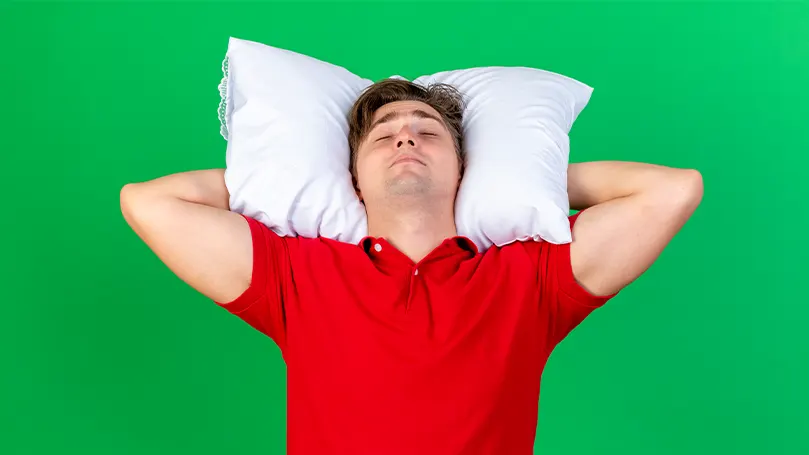
For back sleepers, keeping your spine alignment straight is rather important. So, any mattress with decent support should suit you rather well. The main thing you should be wary of is for the mattress not to be too soft.
This is because when sleeping on your back (especially if you're a bit heavier) you don't want your hips to dip into the mattress and thus give your spine a U shape. So, if possible, check whether the mattress has too much leeway when you lay on it.
Another way to make sure your spine is in a healthy position is by getting a good pillow that supports your neck but doesn't raise your head too far up. And if you want some pillow recommendations for back sleepers, this is the article for you.
What if I am a stomach sleeper?
For stomach sleepers, the most important thing you need to keep in mind is to keep pressure off your gut and lower back. This factor relies both on your weight and the firmness of the mattress you end up choosing. As a general rule of thumb, if you're on the heavier side, try to go for a mattress that's a bit softer (but not so soft that your mid-section can dip into it and curve your back).
That being said, some stomach sleepers do prefer a firm mattress. So, the best thing to do is to check whether laying on your stomach brings forth discomfort or even pain. And just like with back sleepers, try to avoid pillows with a big loft, as it might lead to your neck and spine being in an uncomfortable position. So, here are some pillow recommendations for front sleepers.
How to choose a mattress if I'm having back pain?
If you have back pain on a consistent basis, getting a mattress with adequate support and pain relief is a must. Luckily, both spring and foam mattresses can offer these features and thus ease your pain. In fact, even certain mattress toppers, when placed on a medium-firm mattress can provide what you're looking for.
However, we will also point out that keeping your back ache-free doesn't begin and end in your bed. You also need to stop slouching throughout the day, avoid putting pressure on your spine, and see a professional if the pain is severe.
How to choose a mattress if I suffer from neck pain?

When it comes to neck pain, your next mattress might not have all the answers you seek. This is because a good pillow has a lot more influence on your neck than a comfy bed. So, make sure that you don't just pick up the first pillow you find.
After all, pillows can be just as diverse and feature-specific as mattresses! For starters, we recommend looking at the following pillows for neck pain and seeing whether they fit into your budget.
How to choose a mattress if I am overweight?
As you might've noticed, being overweight can slightly change your approach when getting a new mattress. This is largely due to the fact that more pressure is put upon your body, and thus and faults with the mattress can be more pronounced.
With that being said, it isn't the end of the world. The vast majority of mattresses can support people of any weight and most bed frames are extremely sturdy (especially if you go for a metal construction). So, the only things you have to look out for are whether you feel gut discomfort when sleeping on your stomach and/or if your hips dip into the mattress when you're on your back/stomach.
Aside from those two factors, every other part of knowing how to choose a mattress is the same across all weight points. And if you're looking for specific recommendations, we suggest reading our top 12 mattresses for overweight sleepers article.
Conclusion
As you can see, there's a lot to keep in mind when searching for perfection! However, knowing how to choose a mattress that suits you perfectly is more than worth it in the long run. So, do your best to find your perfect pair and go to the comments below if you have any questions.
Spread the word
Related products:
Recommended reading:
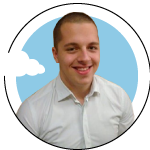

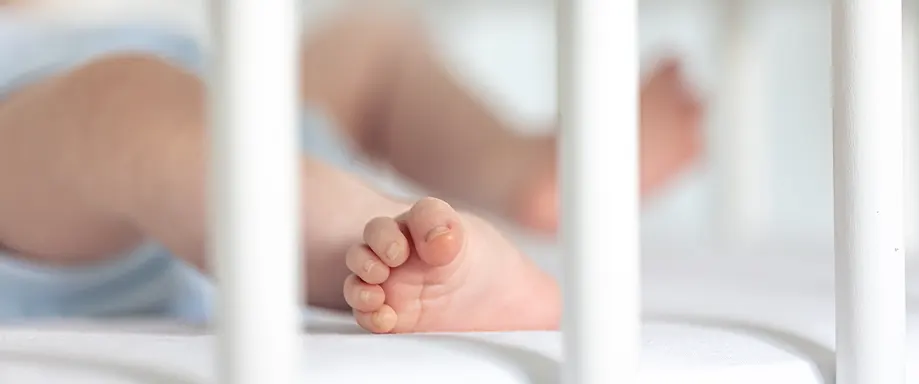
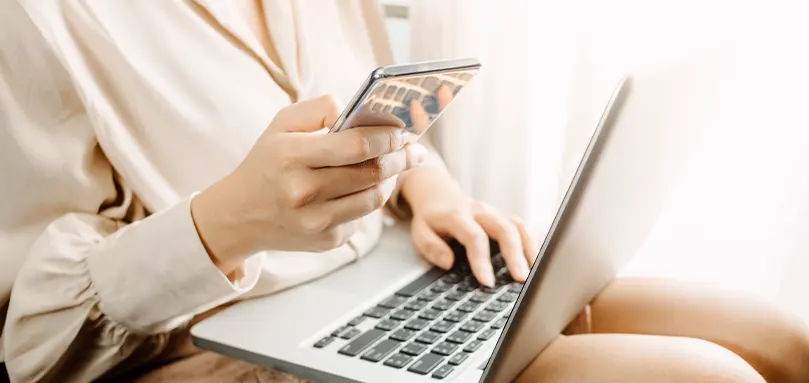











There are no comments yet
"*" indicates required fields